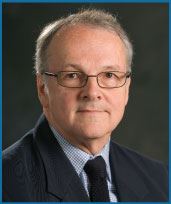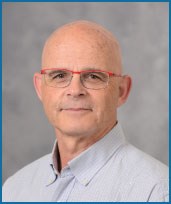University of Delaware announces composite medal award winners
The medal is to recognize outstanding achievement in the field of composite materials.
The Medal of Excellence in Composite Materials was established in 1984 in conjunction with the Decennial Celebration of the Center for Composite Materials of the University of Delaware. The medal is to recognize outstanding achievement in the field of composite materials. The medal carries the names and likenesses of the four initial recipients of the award: Dr. Zvi Hashin, Dr. Tsuyoshi Hayashi, Dr. Anthony Kelly and Dr. Stephen W. Tsai.
Criteria for the award of the Medal of Excellence in Composite Materials include significant contributions to the field of composite materials through leadership, scholarly endeavor, invention and/or economic enterprise over a sustained period of years. Nominations for future award recipients are received by the Honors Committee of the Center for Composite Materials for selection. The design and striking of the medal was sponsored through grants from E. I. DuPont de Nemours & Co., Inc. and Toray Industries (America) Inc.
Here are the 2016 Center for Composite Materials Medal of Excellence Winners:
Dr. Lawrence T. Drzal is a University Distinguished Professor in the Chemical Engineering and Materials Science Department in the College of Engineering at Michigan State University. He is also the Director of the Composite Materials and Structures Center at Michigan State University. From 1991-1999 he was co-director of the NSF State/Industry/University Center for Low-Cost, High-Speed Polymer Composites Processing at MSU and recently was appointed Director of the Vehicle Technical Application Area in the Institute for Advanced Composites Manufacturing Innovation (IACMI). His composite materials research is primarily in adhesion and the fiber-matrix interphase in polymer matrix composite materials reinforced with carbon, glass, polymeric and bio-based fibers and in multifunctional composites in which graphene nanoplatelets, cellulose nanofibers, and other nanoparticles added to the fiber-matrix interphase. He has over 400 peer reviewed research papers and 35 patents and was designated a “Highly Cited Researcher in Material Science” by ISIHighlyCited.com. He has received research awards from the Adhesion Society, US Air Force Materials Laboratory, American Society for Composites, 3M and Dow Corning Corp.
Dr. Drzal has been elected a Fellow of the American Society for Composites, Adhesion Society, American Institute of Chemists, Society of Plastics Engineers, and the Society for the Advancement of Material and Process Engineering. In 2007, Dr. Drzal co-founded XG Sciences, Inc, a private Michigan company that is currently the world’s largest manufacturer of graphene nanoplatelets using processes and technologies developed in his lab at MSU. He serves as its Chief Scientist.
Dr. H. Daniel Wagner is the Livio Norzi Professor of Materials Science in the Department of Materials and Interfaces at the Weizmann Institute of Science in Rehovot, Israel. Born in Israel, Prof. Wagner grew up in Belgium where he earned a License in Physics from the Free University of Brussels (1975). He was awarded MSc (1977) and PhD (1983) degrees in Materials Science from the Hebrew University of Jerusalem. He spent three years at Cornell University as a postdoctoral associate and lecturer before joining the Weizmann Institute’s Department of Materials Research (now the Department of Materials and Interfaces) in 1986.
The author of over 250 papers and various chapters in books, his current scientific interests include the micromechanics of advanced composites and their interfaces, novel man-made materials such as carbon nanotubes and nanocomposites, and the mechanics of natural and nature-inspired structures. He is a fellow of several professional societies, and also holds a number of patents in the area of composites. He was a visiting professor at various institutions, including the Max Planck Institute in Golm-Potsdam, the Ecole Centrale in Paris, the Technical University of Hamburg-Harburg (as a ‘Mercator’ Guest Professor), the Centre de Recherches Paul Pascal in Bordeaux, Exxon Research and Engineering in Annandale, New Jersey, and more.
In 2000, he was elected Chairman of the Gordon Research Conference on Composites in Ventura, California, and in 2013 he was invited to present the Harvard-MIT Joint Nanomaterials Special Lecture at the Massachusetts Institute of Technology. Recently he was the Chairman of the COMPO2014 Nanocomposites and Biocomposites conference at the Weizmann Institute. He is the recipient of a number of prizes and awards, among them the 1991 Fiber Society Award (USA), 2010 Gutwirth Research Prize (Israel), the 2014 Christoffel Plantin Prize (Belgium), and the 2014 Landau Prize in Chemical and Materials Engineering (Israel).
Related Content
Natural fiber composites: Growing to fit sustainability needs
Led by global and industry-wide sustainability goals, commercial interest in flax and hemp fiber-reinforced composites grows into higher-performance, higher-volume applications.
Read MoreSulapac introduces Sulapac Flow 1.7 to replace PLA, ABS and PP in FDM, FGF
Available as filament and granules for extrusion, new wood composite matches properties yet is compostable, eliminates microplastics and reduces carbon footprint.
Read MoreThermoset-thermoplastic joining, natural fibers enable sustainability-focused brake cover
Award-winning motorcycle brake disc cover showcases potential for KTM Technologies’ Conexus joining technology and flax fiber composites.
Read MoreBcomp ampliTex makes appearance in Cupra EV Cup Bucket seats
The entire Cupra Born VZ line-up features all-natural fiber front seats that highlight functionality, aesthetics and reduced CO2 emissions.
Read MoreRead Next
“Structured air” TPS safeguards composite structures
Powered by an 85% air/15% pure polyimide aerogel, Blueshift’s novel material system protects structures during transient thermal events from -200°C to beyond 2400°C for rockets, battery boxes and more.
Read MoreModeling and characterization of crushable composite structures
How the predictive tool “CZone” is applied to simulate the axial crushing response of composites, providing valuable insights into their use for motorsport applications.
Read MorePlant tour: A&P, Cincinnati, OH
A&P has made a name for itself as a braider, but the depth and breadth of its technical aptitude comes into sharp focus with a peek behind usually closed doors.
Read More



















.jpg;maxWidth=300;quality=90)







